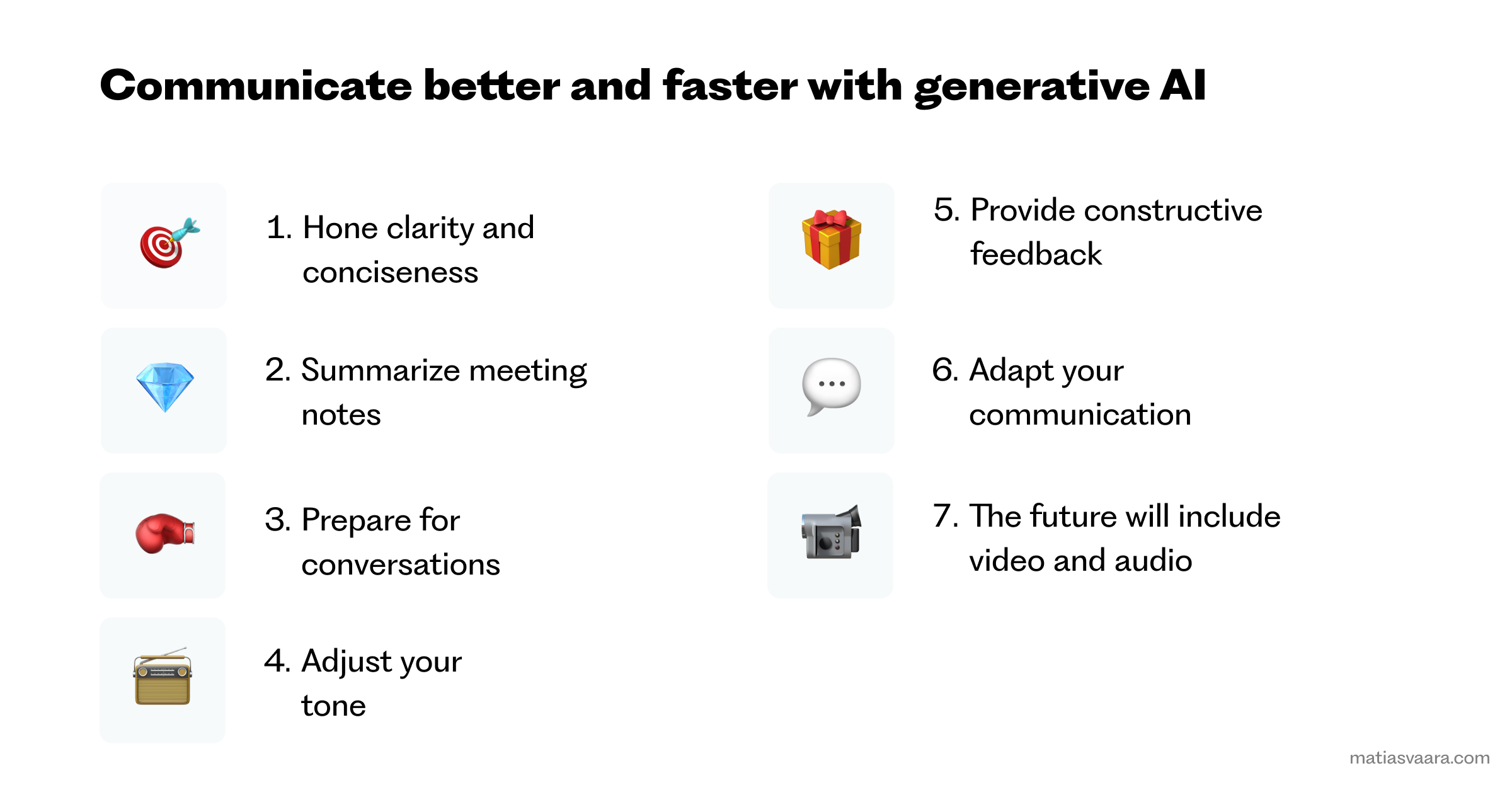In HBO's Succession, the Roy family has Karolina Novotney, their trusted communications director, refining their messaging and finding the right angles.
With generative AI like ChatGPT, we can also benefit from a 24/7 artificial communication specialist, not replacing but augmenting human communication professionals.
Here are seven ways designers can get the help of our virtual Karolina (while ensuring responsible and ethical use of AI).

1. Hone clarity and conciseness
In a constant stream of information, clear and concise messaging is essential.
ChatGPT can help you sharpen the clarity of your messages by acting as your personalized editor. Train it using principles of effective writing, and watch it transform your communication into a fine-tuned masterpiece.
For designers, this is particularly valuable when crafting microcopy, error messages, or onboarding instructions—where every word must earn its place and clearly guide users toward their goals.

2. Summarize meeting notes
ChatGPT can turn raw notes or voice-to-text transcripts into a neat summary of critical points.
This skill is invaluable, especially when dealing with lengthy, exhausting meetings. However, exercise caution when uploading sensitive information to LLMs outside your company.
Also, general models like ChatGPT lack the context needed to point out all the crucial information needed. This is changing, though, as more companies will create their own language models trained on their internal data.
Designers often juggle multiple stakeholder sessions, user interviews, and design critiques—having AI distill these into actionable summaries helps you quickly identify patterns and decisions that shape your design direction.
3. Prepare for conversations
ChatGPT can help you prepare for crucial meetings or challenging discussions.
For example, ask for assistance in preparing for a conversation about an employee's poor performance. You can also engage the AI in role-playing scenarios, practice media or job interviews, and hone your communication skills.
UX and service designers can use this to rehearse difficult conversations with stakeholders who resist user research findings or to prepare for design review presentations where you'll need to defend controversial design decisions.

4. Adjust your tone
Tailoring your tone to suit various situations, audiences, and cultural contexts is critical to effective communication.
ChatGPT can help you fine-tune the style of your messages, ensuring they're contextually appropriate and culturally fitting.
When presenting design work, you might need a more formal tone for executive stakeholders, a collaborative tone for cross-functional teammates, or an empathetic tone when sharing user pain points—AI can help you calibrate these shifts effectively.
Designers giving feedback on others' work or receiving critique on their own designs can benefit from AI that helps frame observations constructively, focusing on user needs rather than personal preferences.

6. Adapt your communication
As AI develops multimodal understanding, it will soon be able to provide feedback on video, audio, and images. In the near future, our personal AI assistants could analyze and enhance live presentations and body language, revolutionizing communication feedback.
For designers showcasing prototypes or conducting usability testing sessions, AI could eventually provide real-time feedback on how clearly you're explaining interactions or whether your body language is inadvertently influencing participant responses.
While AI offers opportunities to elevate our communication skills, it also raises essential questions about privacy and individual rights. By using AI responsibly and ethically, we can harness its power to improve our communication and make a positive impact.
I also don’t think the need for communication professionals like the fictional Karoline will be radically reduced. Instead, communication pros will have a chance to level up their impact by focusing on the strategic parts of communication.


